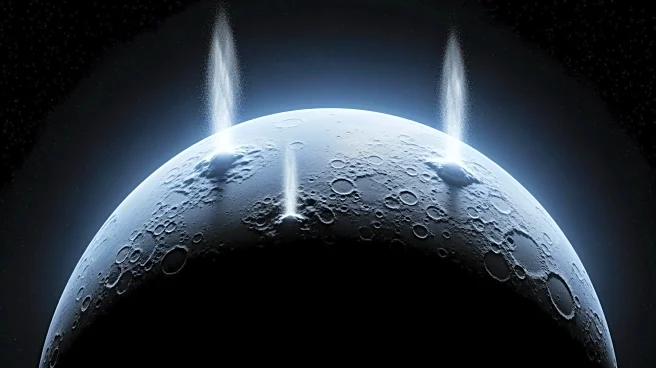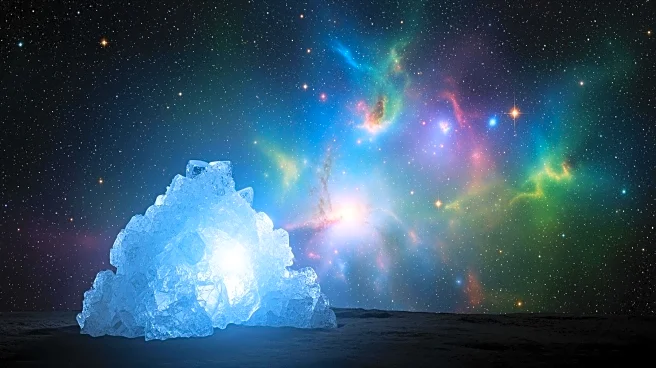What's Happening?
NASA's Perseverance Rover has made a significant discovery on Mars, uncovering potential clues to ancient microbial life. The rover's instruments, PIXL and SHERLOC, analyzed a rock formation at Cheyava
Falls, revealing colorful spots that may indicate past microbial activity. These spots contain minerals such as vivianite and greigite, which on Earth are associated with biological processes. The discovery is notable because it involves some of the youngest sedimentary rocks examined by the mission, challenging previous assumptions that signs of ancient life would be found only in older formations. This suggests Mars may have been habitable for a longer period than previously thought.
Why It's Important?
The findings from Perseverance could have profound implications for our understanding of Mars' history and its potential to support life. If confirmed, the presence of biosignatures in younger rocks could indicate that life on Mars persisted longer or emerged later than previously believed. This discovery could reshape scientific approaches to searching for life on Mars and other planets. It also underscores the importance of continued exploration and study of Mars' geology and climate history, which could inform future missions and the search for extraterrestrial life.
What's Next?
The scientific community will likely scrutinize these findings through peer-reviewed publications to validate the potential biosignatures. Further analysis and exploration by Perseverance and other missions could provide additional evidence to support or refute these initial findings. The results may influence future Mars missions, including those aimed at returning samples to Earth for more detailed study. Additionally, the discovery could prompt a reevaluation of the criteria used to assess habitability on other planets.
Beyond the Headlines
This discovery highlights the challenges of distinguishing between biological and abiotic processes in the search for extraterrestrial life. The presence of minerals that can form without life complicates the interpretation of potential biosignatures. The scientific community employs rigorous standards and frameworks to assess such findings, ensuring that claims of past life are substantiated by extraordinary evidence. This process is crucial for advancing our understanding of life's potential beyond Earth.











